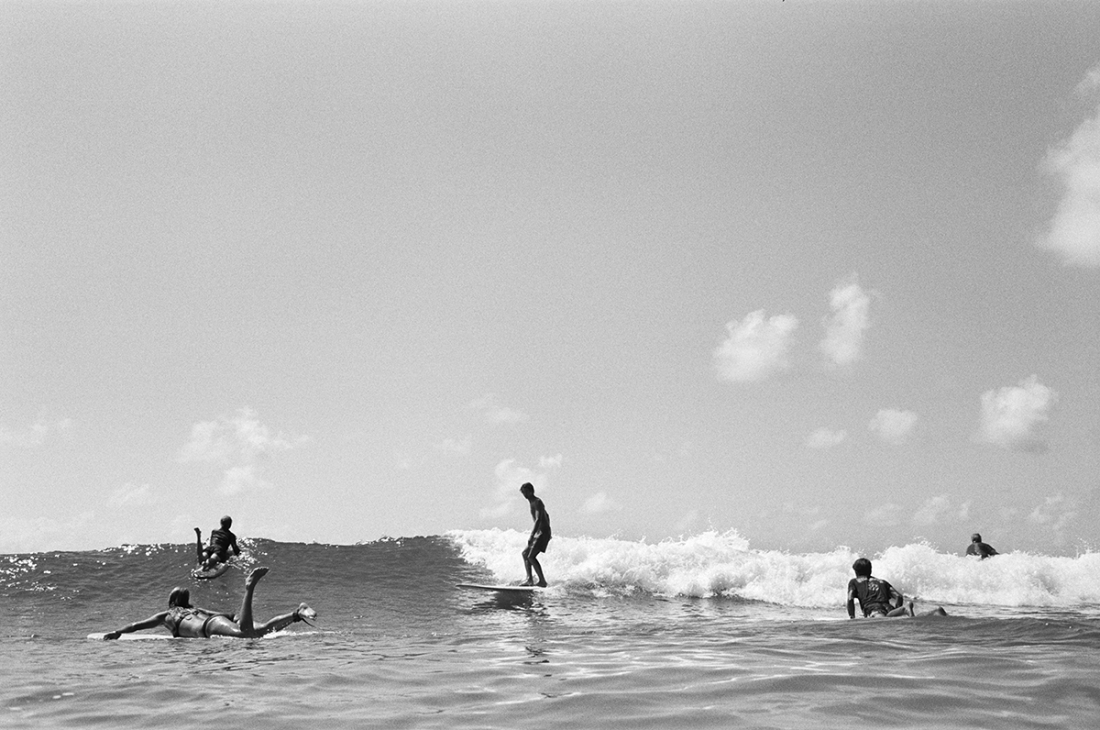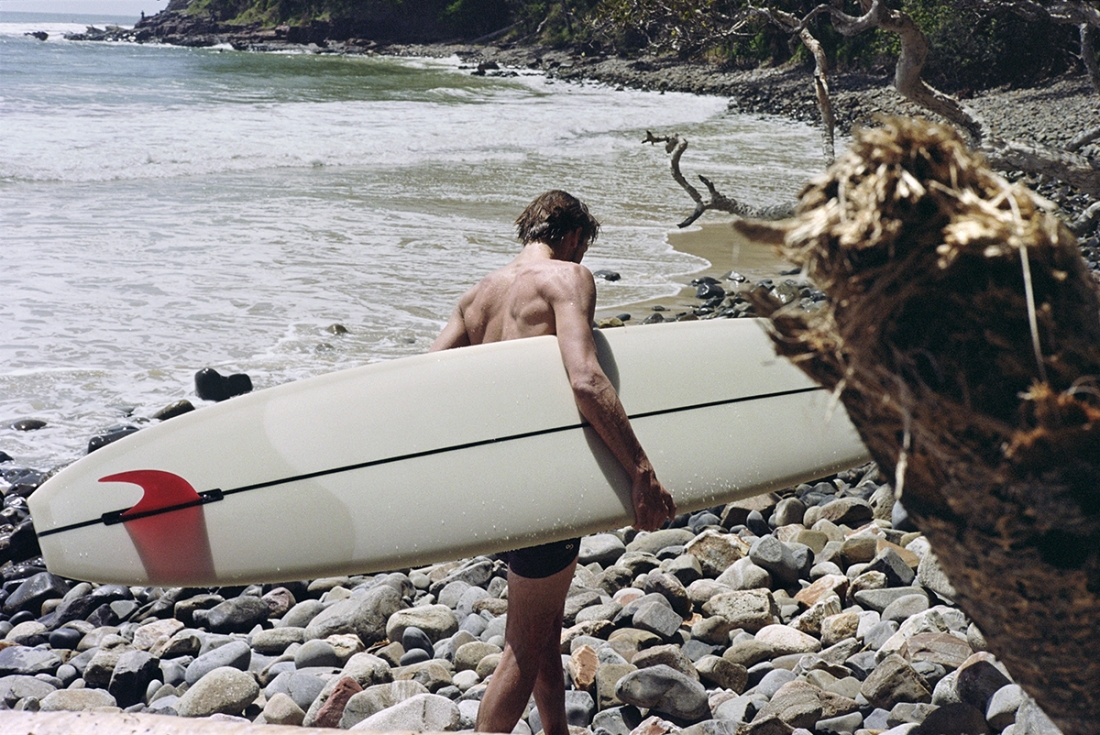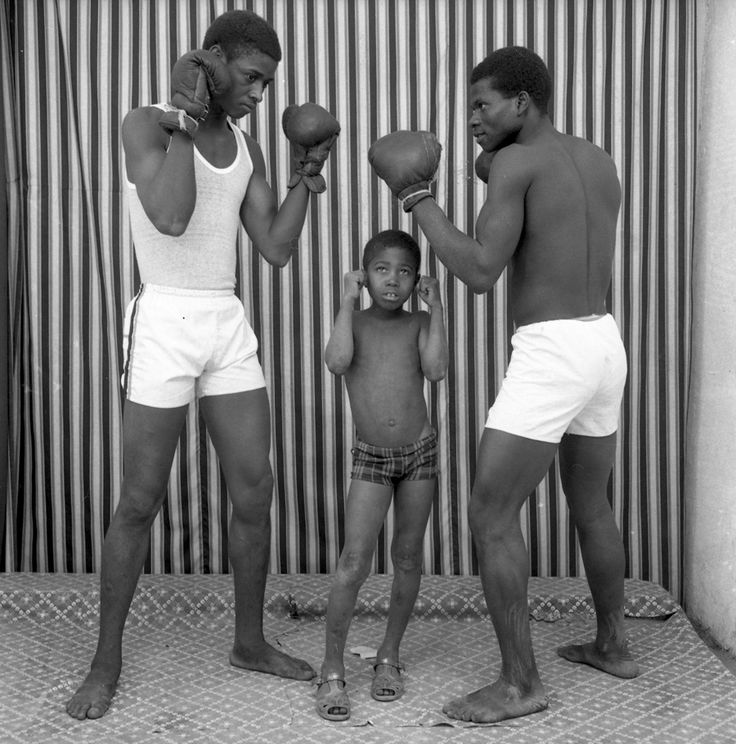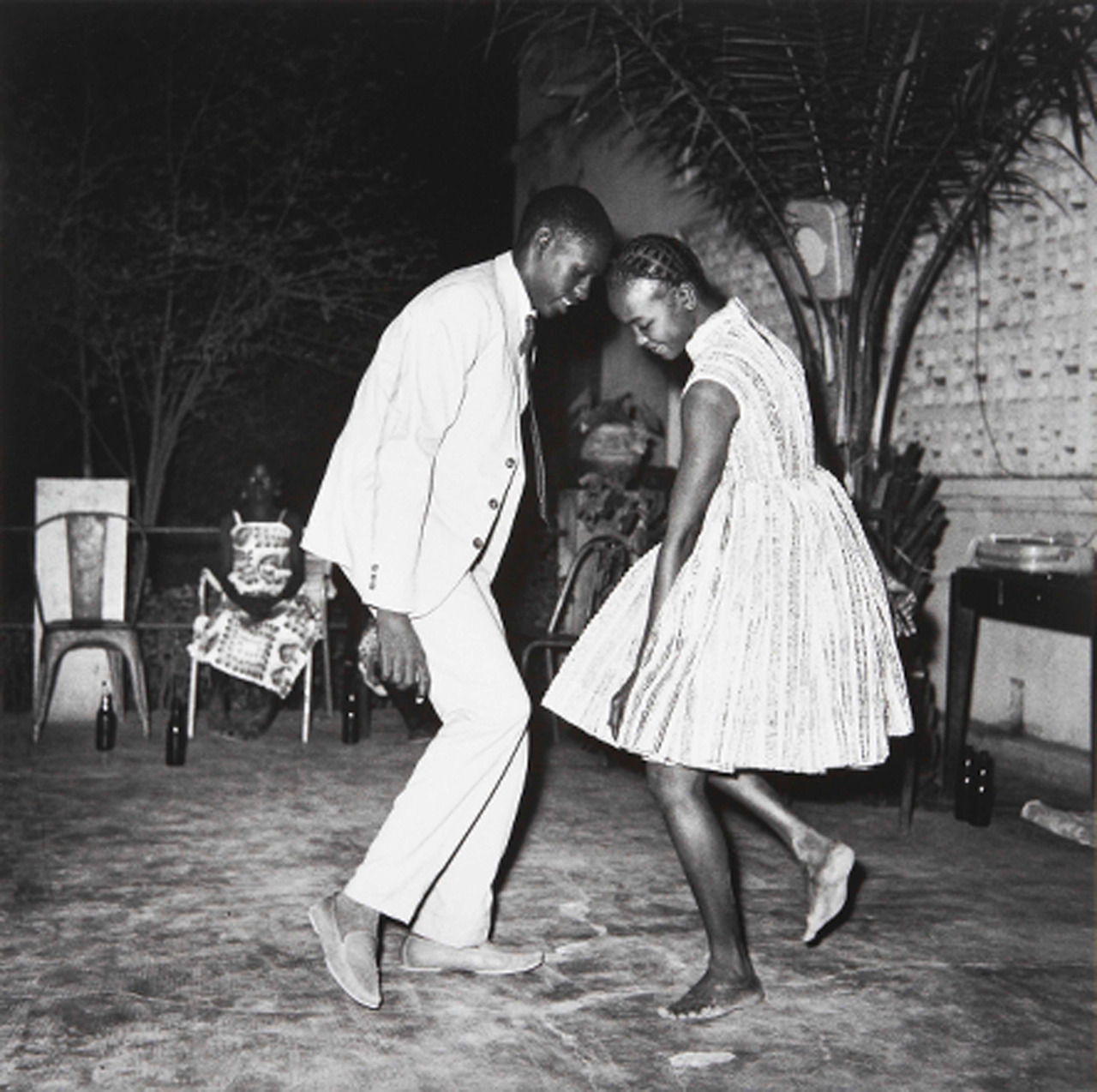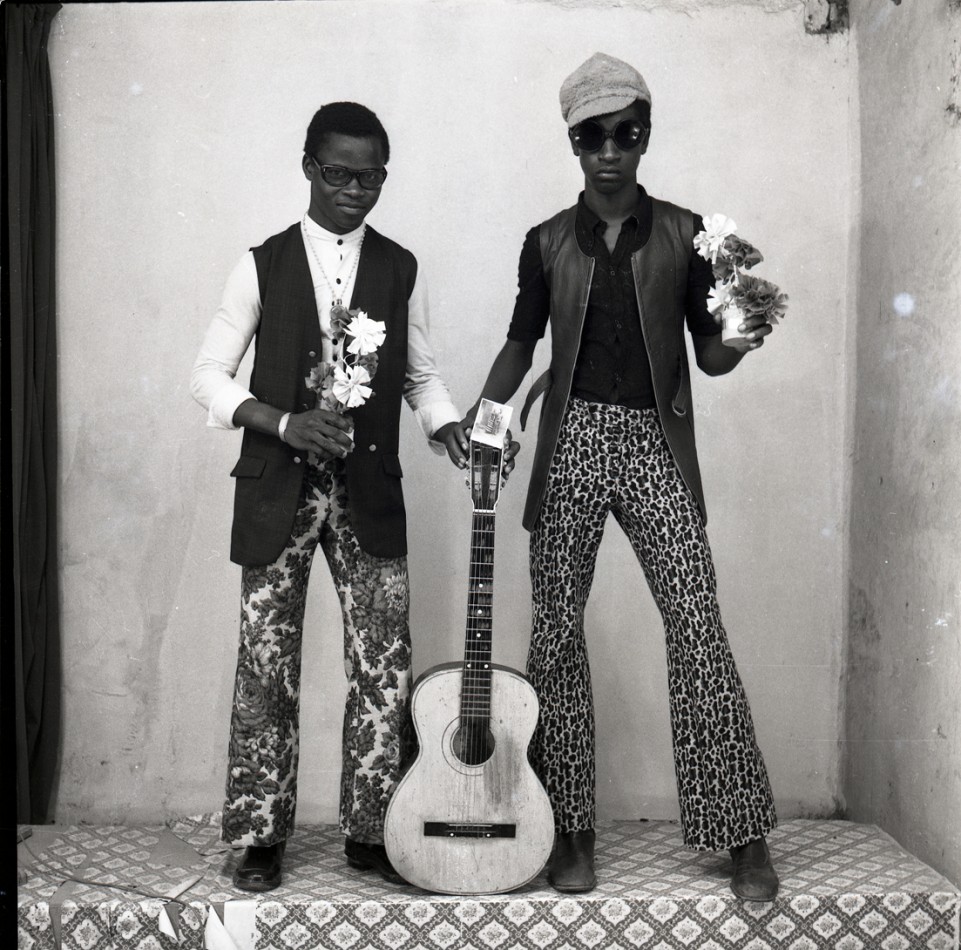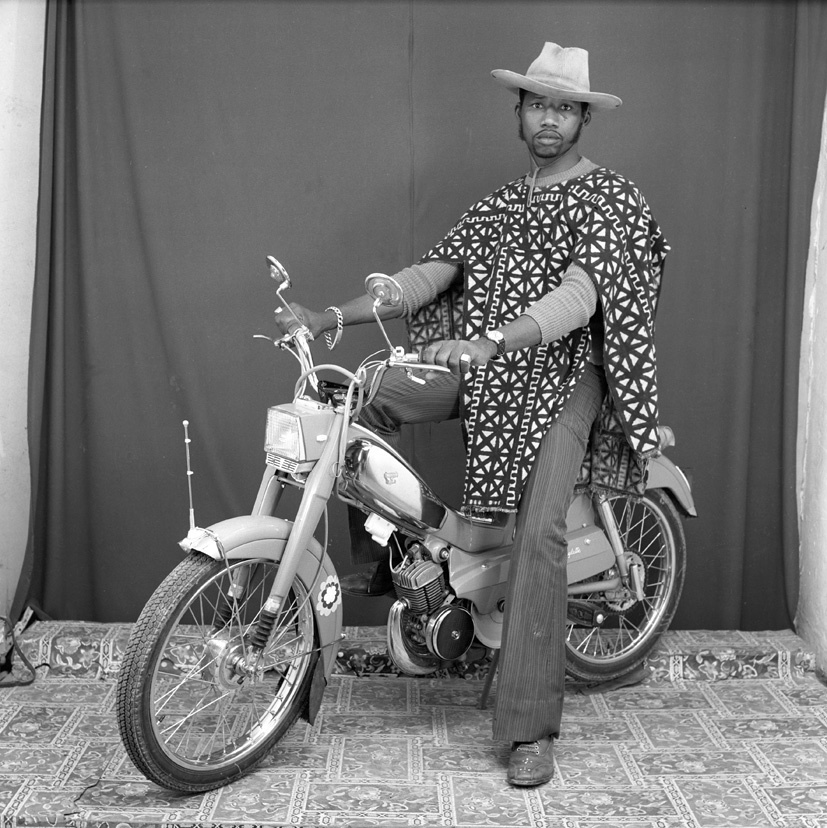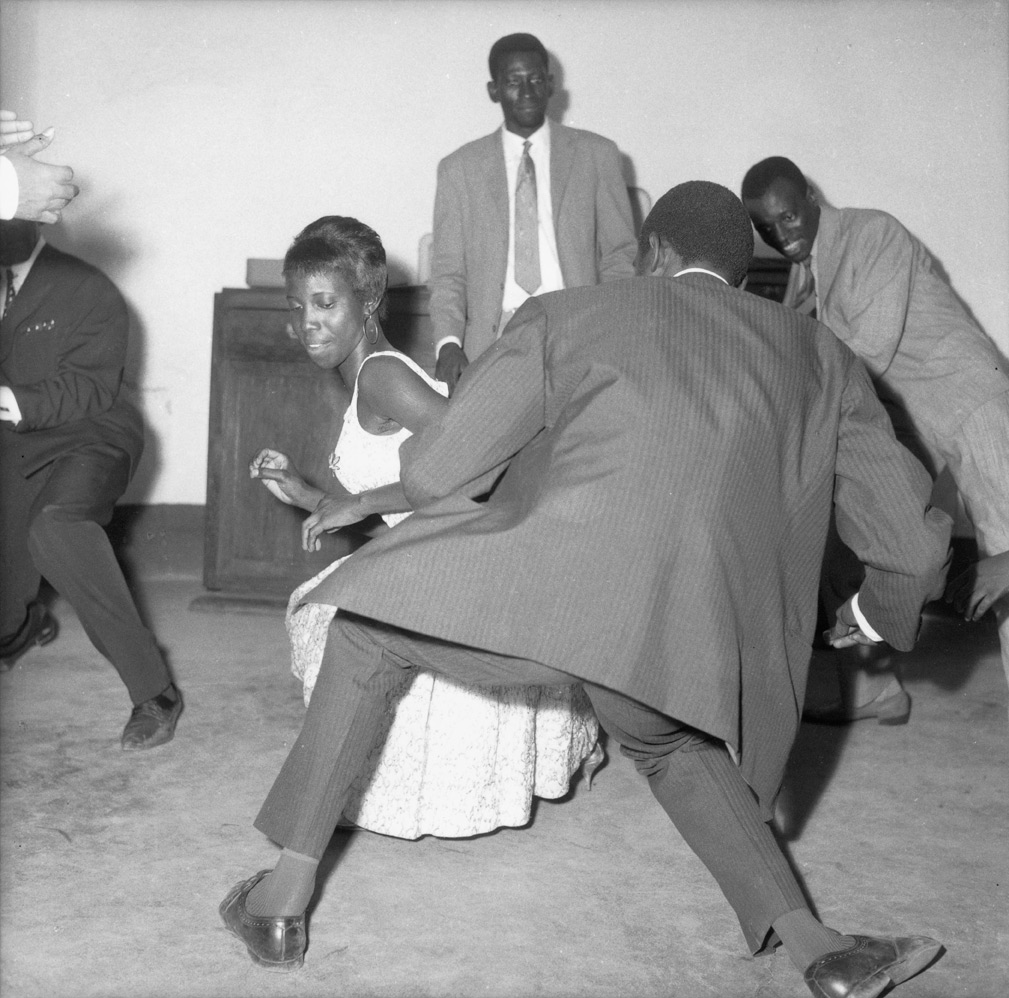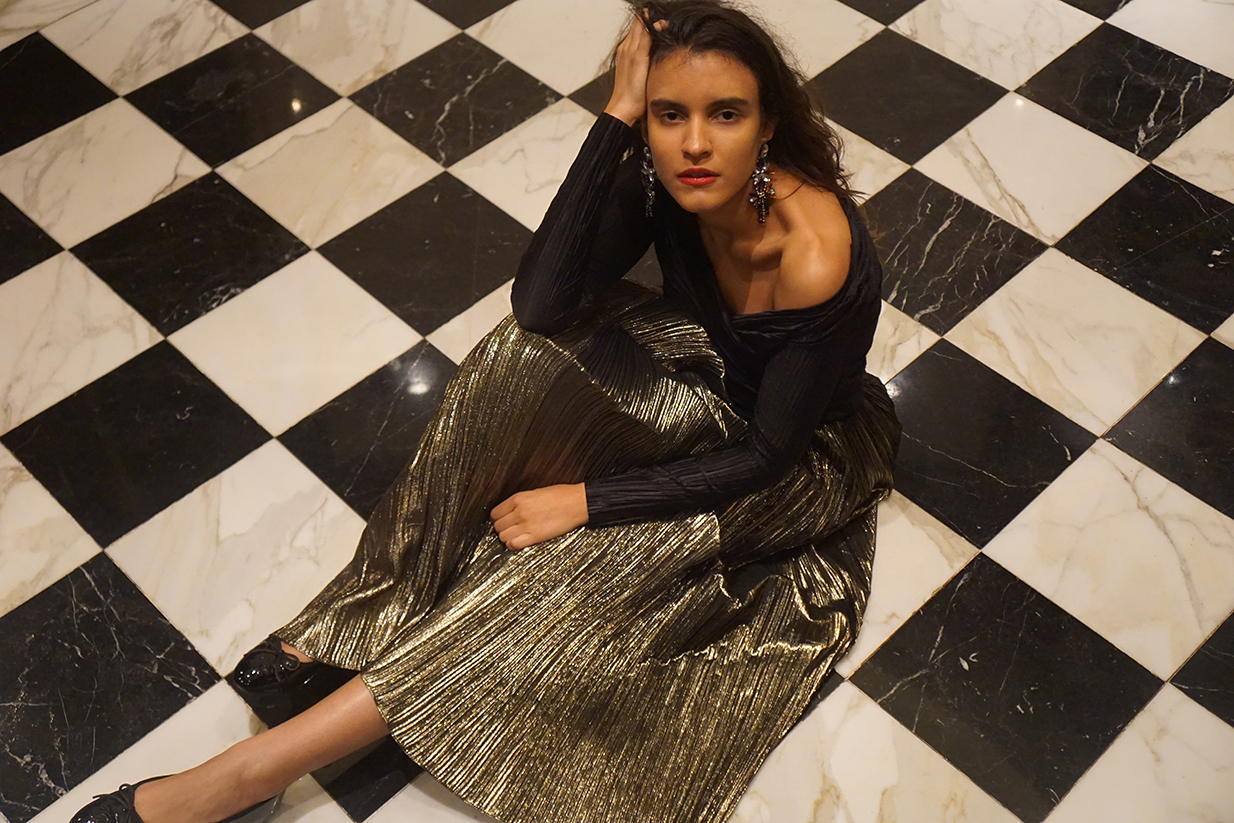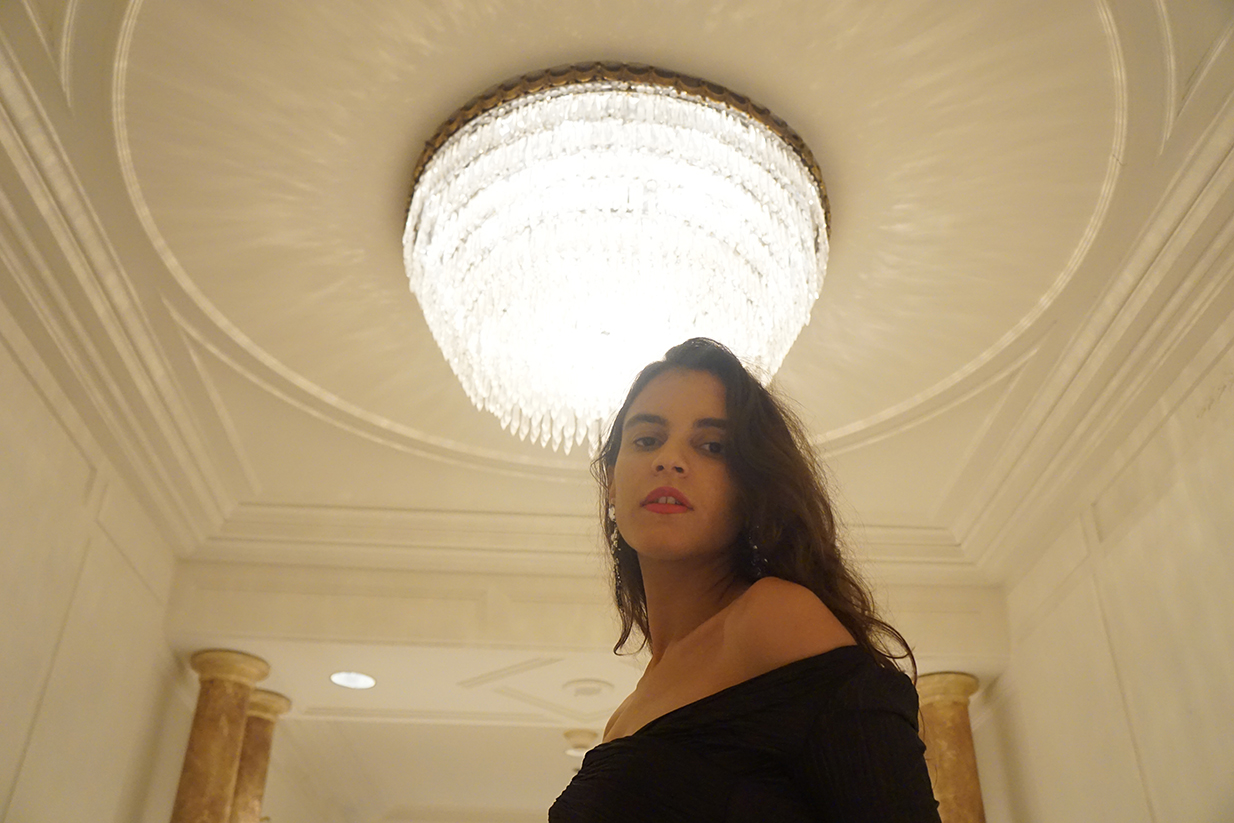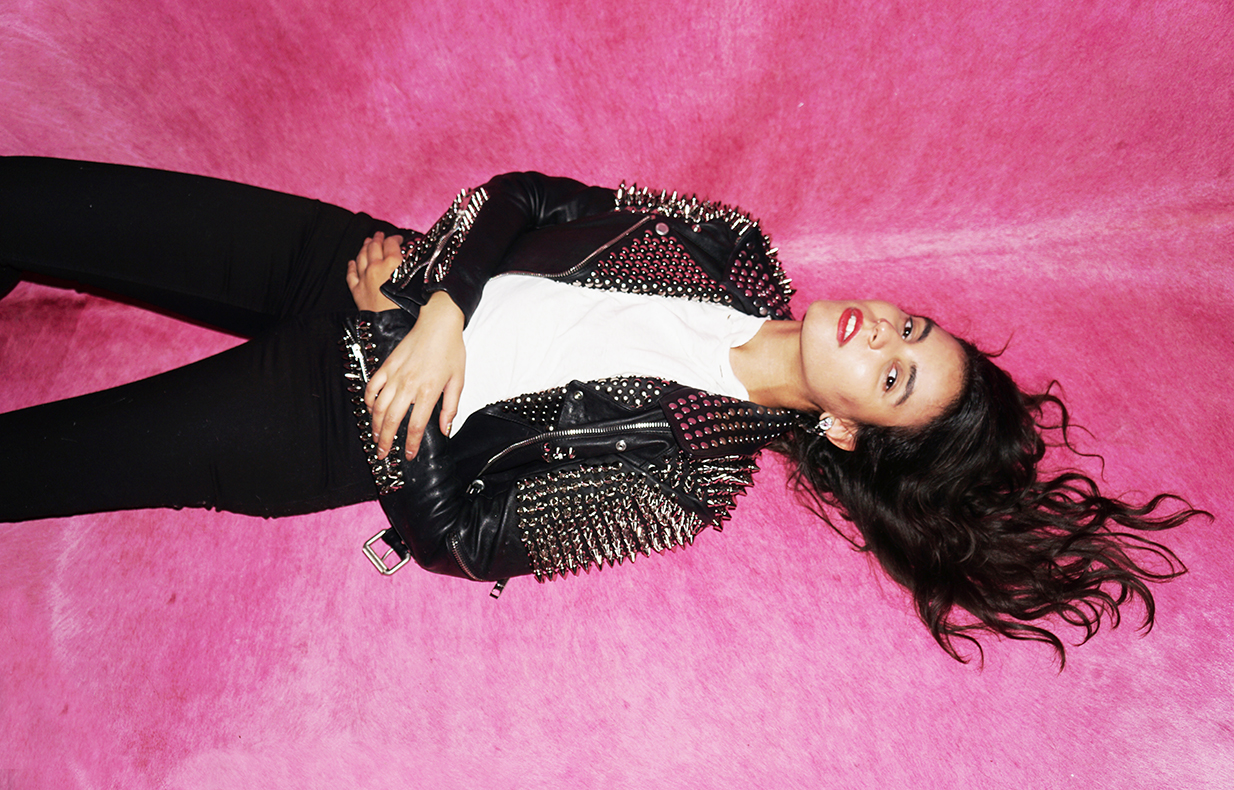A short walk from the main gallery where Oliver Clegg’s first solo exhibition opened over the weekend, at Erin Cluley Gallery in Dallas, is a former ice factory where the artist’s pièce de résistance is on view. “Until the Cows Come Home” is a kinetic sculpture in the form of a round table – split at the center with armless diner-like chairs and surface hues reminiscent of a Corbusier color palette. The sculpture spins manually every twenty minutes. This week, during the first leg of the exhibition, entitled Life is A Gasssss, the sculpture will be host to a series of interactive dinners. The sculpture, along with much of Clegg’s work, is a statement on our culture’s addiction to information and subsequent information overdose. The dinners will force participants to face each other, sans digital devices, in a one on one interaction. The dizzying centrifugal motion is symbolic of our incessant need for change and new visual stimuli. It is a theme that the U.K. born, New York-based artist is carrying on with his distorted trompe l’oeil portraits of cartoon icons in the form of deflated balloons painted on canvas, which will also be on view – perhaps artifacts of a culture laid to waste and a collective spiritual ennui. We got a chance to catch up with Clegg in his studio to discuss his work, his process and his upcoming book, which will encapsulate ten years of the artist’s work.
SCOUT MACECHRON: How is being a father and doing your work?
OLIVER CLEGG: The point is, when you have the more responsibilities that you have in your life, you have to schedule your day more effectively. You’ll go in, and the hours that you have to work, you’ll work hard. Sometimes you’ll be more productive. Sometimes you’ll be less productive. You have to work with more routine and less spontaneity. You end up maximizing the time you have.
MACECHRON: Tell me about your history. Were you a kid who loved to draw or paint?
CLEGG: It’s really a case of whether you are good or not good at something. My work has always revolved around painting and drawing. There are other expressions that have happened since I’ve started making contemporary art, but the starting point has always been painting and drawing. That’s what I’ve always had talent and interest in. That starts young, drawing dinosaurs and rabbits or whatever. You also have to make decision in your late teens, whether you’re going to university in art, or whether you’ll do something art related, but not in the practical sense. Within the time of my late teens and early twenties, I spent two years in Italy. I studied portrait painting. It was less about painting portraits, and more about the technique of painting in a naturalistic style. After I finished my degree, I had this quandary. Do I pursue a career in art as an artist or not as an artist? I did some internships at galleries and a magazine in London. Then, I decided that it wasn’t for me. At that point, I pursued my master’s. The rest is history. I was very lucky; there was always a consistency of interest.
MACECHRON: Did your time working for galleries and magazines inform the way you work?
CLEGG: It’s a case of broadening your understanding of art, in terms of theory and tradition. I wouldn’t say that it encouraged the drive you need to get into this world. But I was able to look at the art that was being made, and I wondered what I could contribute to the dialogue. It was useful, but not complete. It helped me augment information.
MACECHRON: Did you work oil painting?
CLEGG: I was always working oil painting in the beginning. I knew that was what I wanted to do. When I was doing my degree, I taught myself how to paint in oil. I was interested in technique, pigmentation, and the archival nature of the medium. The works that I sold initially were all oil variations of traditional paintings.
MACECHRON: At what point did you start incorporating other mediums?
CLEGG: I started printmaking, and I realized that I didn’t just have to do painting. I could have a break from painting, and I could do something else. I would come back to painting with a fresh perspective. It was like taking a vacation from one practice in order to explore something else. I would come back refreshed. I became more confident and had more opportunities.
And it all depended on the context. At the Freud Museum at 2008, I got an opportunity to present work. It was Freud’s house, like a domestic setting. Suddenly, the paintings fit in, for obvious reasons of relationships to childhood, etc. I was able to work in different mediums that were more suitable to the context. I made a chess piece for Freud’s desk. I made a floating light bulb above his table. I made different sculptures and embroideries that went in Anna Freud’s room. It was really a reaction to the environment.
But when I was started to think of a new idea, I would always go back to painting. Painting was the initial impetus. You have a show, and there’s a foundation around painting, but then there are other things that are necessary to express the message more coherently. That’s what happened with this show. It’s happened organically. I do a lot of sculpture now, but I still imagine my studio as a painting studio. The sculptures are made outside of the studio.
MACECHRON: What do you mean by outside of the studio?
CLEGG: The sculptures belong to a more conceptual side of my practice. I get a lot of the pieces fabricated because they would be too big to be built in my studio. I have a carpenter, a mold-maker, a metal guy. We all work together. The ultimate scenario is that you would have a studio to house all the skills together. But these pieces come out in a more random fashion. I just use them when I need to. And they know me well enough that I trust them to make something that fits both my aesthetic preferences and their practical needs.
MACECHRON: How has the work developed into this show?
CLEGG: I feel there’s not much radical change in my work in the past 10 years. There’s always been a sense of being born in 1980, without a lot of technology. If we had computers, they were only used for games. When I went to Southeast Asia when I was 19, we only used email to let our family know we were okay. Same with when I lived in Italy. I didn’t get my first laptop until I was 26, and it was a shitty thing. A lot of my work looks at the implications of this change. That’s why there’s a sense of the neglected object. There’s a strong feeling of nostalgia, being evoked by shadows. Shadows connote both existence and time. There’s a balance of contrasts in the work – past/present, melancholy/ecstatic, accidental marks/deliberate marks. There are always two points of view. I straddle the digital and analogue generation. When I became an artist, that’s how my life was changing. In this show, I take iconography from my childhood – Donald Duck, Garfield – and reimagine it as deflated helium balloons. Some of the people from this generation might not recognize those figures. What are the implications of this fast technological change? What are we losing? What is the difference between a culture with simple, definite cultural icons to a culture that has an oversaturation of imagery and information? We start beginning to not care about anything.
MACECHRON: What’s it like to see your daughter interact with technology?
CLEGG: She’s too young to watch television, but she has started to put the phone up to her ear. She can use her finger miraculously to turn it on. But she doesn’t know what she’s doing. She has accidentally sent emails because she just wants to press the buttons. We want to spend more time in places where she is outside all the time. There’s a world outside of the computer. If we do something now, maybe she wont’ be so dependent. But whether you like it or not, you have to use the tools of your peers, or you’ll become isolated.
MACECHRON: Which of these figures have personal significance to you? Or did you just choose them because they were recognizable?
CLEGG: The choice was based on what I could get my hands on, and there's a focus on pop icons from my generation. I don’t want it to be confused with street art. I don’t want them to feel like one-liners. I had to create unity through the body.
MACECHRON: You don’t want to be confused with street art?
CLEGG: No. Pop iconography is appropriated by street painting. I want the paintings to be more connected with traditional paintings. There’s also repetition by the scale. There are twelve paintings. They are not individual messages. They are one body. They have relationship to the sculptures in the show. They’re not one-liner half-funny, half-serious paintings.
MACECHRON: Let’s talk a bit about your sculptures. You have a multimedia room?
CLEGG: I don’t like the word “multimedia.” It makes it sound like it’s in a science museum. There is an external space that’s a garage. There will be a disco ball spinning around, with a poster refracting squares of light. The light will say, “Me,” in my handwriting, a thousand times. There will probably be a sound element. That was one sculpture. The other sculptures is an eighteen foot bar coming across. Hanging off the bar is a single wire. At the bottom of the wire, there’s a golden carrot. There will be a plinth underneath it. There are two of these. A wooden stick hangs off the other one. So you have incentive and disincentive. There’s a sculpture that will say in neon, in my handwriting, “Life is a gas.” We’re also putting in a spinning table, where we’ll host a series of dinners. People will come see the show, and then we’ll have this social experiment. A lot of the work of the show has this sense of a party – disco ball, balloons, childlike references. The spinning table is a personification of the relationship to the “good times.”
MACECHRON: You have a book coming out as well?
CLEGG: Yes. We’re publishing a book at the same time as the show. It will have text by Darren Bader, a New York based artist; James Webster, a psychoanalyst; and Antony Hynes, a comedy writer. They’ll all be contributing to this catalogue. Because the book is coming out, I wanted to make a show that related to the diversity of my practice.
MACECHRON: The spinning table was from your first solo show. Why did you want to bring it back?
CLEGG: I wanted to give it context. I wanted it to relate more to the practice and the art as a whole.
MACECHRON: The disco ball sculpture that says, “Me, me, me,” does that relate to your feelings about the digital age?
CLEGG: In a few ways, it relates to the show. I see these paintings as avatars. The avatar is the way we present ourselves to the world around us on a digital platform that encourages narcissism. Any time someone meets a famous person or goes to an event, they have to take a picture. It’s a horrendous, horrific presentation of the self. The irony is, the people who want to counter that are just as prolific. Their righteousness is more narcissistic. It’s the medium where these ugly sides of our personalities become more exploited. “Me, me, me,” relates to that. It also relates to this existential question: “Who am I? What am I doing here? Where am I going?” Ultimately, however hard we try, we all come down to just really caring about ourselves. The infinite struggle of humanity is to be more compassionate. But I see it becoming harder and harder in a social and cultural climate that forces you to consistently question your relationship to other people.
Oliver Clegg "Until the Cows Come Home," 2014
MACECHRON: And the carrot and the stick?
CLEGG: What anchors the exhibition, for me, is this sense of irony. Irony is built on contrast. The title, “Life's a gassssss,” doesn’t mean just “Life is great.” Around your thirties, you start to question your mortality. You have the idea of being lured by a carrot, to move forward. But you’re going to get hit by the stick anyway, if you don’t move. It’s a cool image, but it has more profound implications. You’re going whether you like it or not, basically. When you question, “What is the point of my existence?” it becomes a difficult thing to answer. For me, I think you’re on this journey, and you just kind of have to do it. That’s the message of that piece. But it retains the playful, cartoonish imagery. It’s comical, the way the show is, though it has more serious commentary.
MACEACHRON: You’ve got a monograph and a book coming out. How did the monograph come about?
CLEGG: It’s something I’ve been working on for a couple of years—it started as a book of painting. But I made so much other work that it became something a little more diverse. There was an imbalance in the amount of painting and the sculpture. As I continued to make sculpture work that was more socially engaged, like the games side and the foosball table, it ended up becoming a book that was hard to know when to finish. When I was given the opportunity to do the show in Dallas, I was able to have a different focus. And I can make a book that brings things up to date. It’ll give a coherent representation of Oliver Clegg in 2016. I like the idea of self-publishing. I like the idea of me commissioning the text. I like the idea of making those choices myself, so it can become a model for what I do in future shows. Part of my whole thing is wanting to do things my way, developing an organic network. Rather than the museum saying, “We’ll do the book for you,” and you don’t get to meet anyone along the process. I don’t want to end up having done lots of interesting stuff without having met people along the way. For me, a lot of my experience is about making friendships - with my fabricators, with my designers, photographers. I think it’s the best way for our culture to survive. I’ll ask a friend and a friend will write something, and that way it’s genuinely born out of integrity.
MACEACHRON: Did working on the book make you reflect on your work in ways you hadn’t before?
CLEGG: Yeah. What happens with these lists is you end up writing the same thing again and again. Then you end up making it.It might be something you first wrote when you were twenty-eight years old, and you make when you’re thirty-five years old. Sometimes you need that kind of push. The book gave me a vehicle for motivating myself to do things that I said I was going to do but hadn’t gotten around to. These parts of the process are very useful. In terms of the work, you’re able to see it all together, which is either satisfying or horrifying, whichever way you look at it.
MACEACHRON: Was it a bit of both for you?
CLEGG: I think the point is you’re never happy with anything. And if you are, then there would be no point to really continue to do anything, creatively. At a certain point, you commit to something and you just do it, and you look back at it and question it after. So I suppose it can be horrifying sometimes, yeah.
MACEACHRON: How did you end up at the Dallas Art Fair?
CLEGG: I was asked to be in this auction called Redefine, which is hosted by the Goss-Michael Foundation. It’s focused mainly on young British artists, YBA’s. I gave a piece for that, and made some contacts while in Dallas. I was approached by a curator of exhibitions at Dallas Contemporary who had an amazing space and offered me a solo show over the fair. In the course of doing that, I’ve been there a couple of times and met the community. We’d never been to Dallas before—you always pick LA, New York, or even New Orleans. But Dallas has a great art scene, which is refreshingly optimistic, great people. We love Dallas. We have friends there now. The whole thing worked out.
MACEACHRON: What’s it been like, prepping for your first solo show?
CLEGG: Well, it’s my first solo show in the states.
MACEACHRON: Right.
CLEGG: You know the year before I came to New York I was in fifteen shows. The difference with this is it’s a different context. Everything is an up and down, love and hate kind of thing. Suddenly, it could be the last minute that you make that intervention or piece that changes the whole perspective of the show. Everything feels complete at every point. That is, until you do something that adds to the exhibition and you think, “I can’t believe it ever existed without that.” Microcosmically, I think that happens with individual paintings. It’s the same process with anything creative. That’s why I feel it’s necessary to make a book. It’s in response to things in the show, not a self-aggrandizing thing for myself. It’s like a dinner party. You give people five minutes to talk about the same subject, and you get to know more about them and their response to the subject. I want that to inspire people. I feel like books have a longer shelf life in transmitting messages that can inspire people.
MACEACHRON: Do you feel like the shelf life of work can fade after a show is over?
CLEGG: With a book, you put it into a context in which the work is joined. You’re basically saying, “This is the show.”
MACEACHRON: When do you work, how do you work? Do you have a process or ritual?
CLEGG: It depends on what you’re making. Some days I’ll start at midday and work until ten. I feel like I can only really do painting for six hours in a day before I get distracted. I want my paintings to have a sense of immediacy, colloquialism, or a vernacular in the use of brushstroke. A lot of it has to do with preparation, and the execution is actually pretty quick. The more you understand process, the more confident you can be with execution. Living upstairs and working downstairs, I can get up late and work late, get up early and work early. We have a lot of dinner parties, and I can work until seven o’clock and have a shower before dinner’s ready. I’ve set up a studio practice where I can accommodate what I want to do, and I don’t have a routine. If I have a deadline I just make sure the work gets done. I don’t have a nine to five job. When you’ve got something to do then you do it.
MACEACHRON: What sorts of dinner parties do you have?
CLEGG: We put up a table for about twelve people. I’m interested in bringing people together who don’t know each other. I like people meeting people, they can burgeon a new friendship or contact or whatever. You have to plan things long in advance, which is not a very New York thing, it’s a British thing. For people with kids, spontaneity is less a part of your life. It’s in juxtaposition with a city, or a culture, where people don’t plan ahead more than an hour or two.
MACEACHRON: Do you think there are different reactions among Americans and Europeans to your work?
CLEGG: Yeah. If it were shown in London, it would have a different feeling than it being shown in America. It has to be more powerful in London, because it has particular figurative imagery. When I was painting in London, I had a very restrained palette. Here there’s more color. When you make figurative work, you’re catering to a specific audience. Sometimes you don’t know who that is until they come in and have an emotional response to it.
Oliver Clegg "Life Is A Gasssss" will be on view until May 7, 2016 at Erin Cluley Gallery. The gallery will also be showing work by Clegg at the Dallas Art Fair from April 15 to April 16. Intro text by Oliver Maxwell Kupper. Interview by Scout Maceachron. Photographs by Adam Lehrer.



